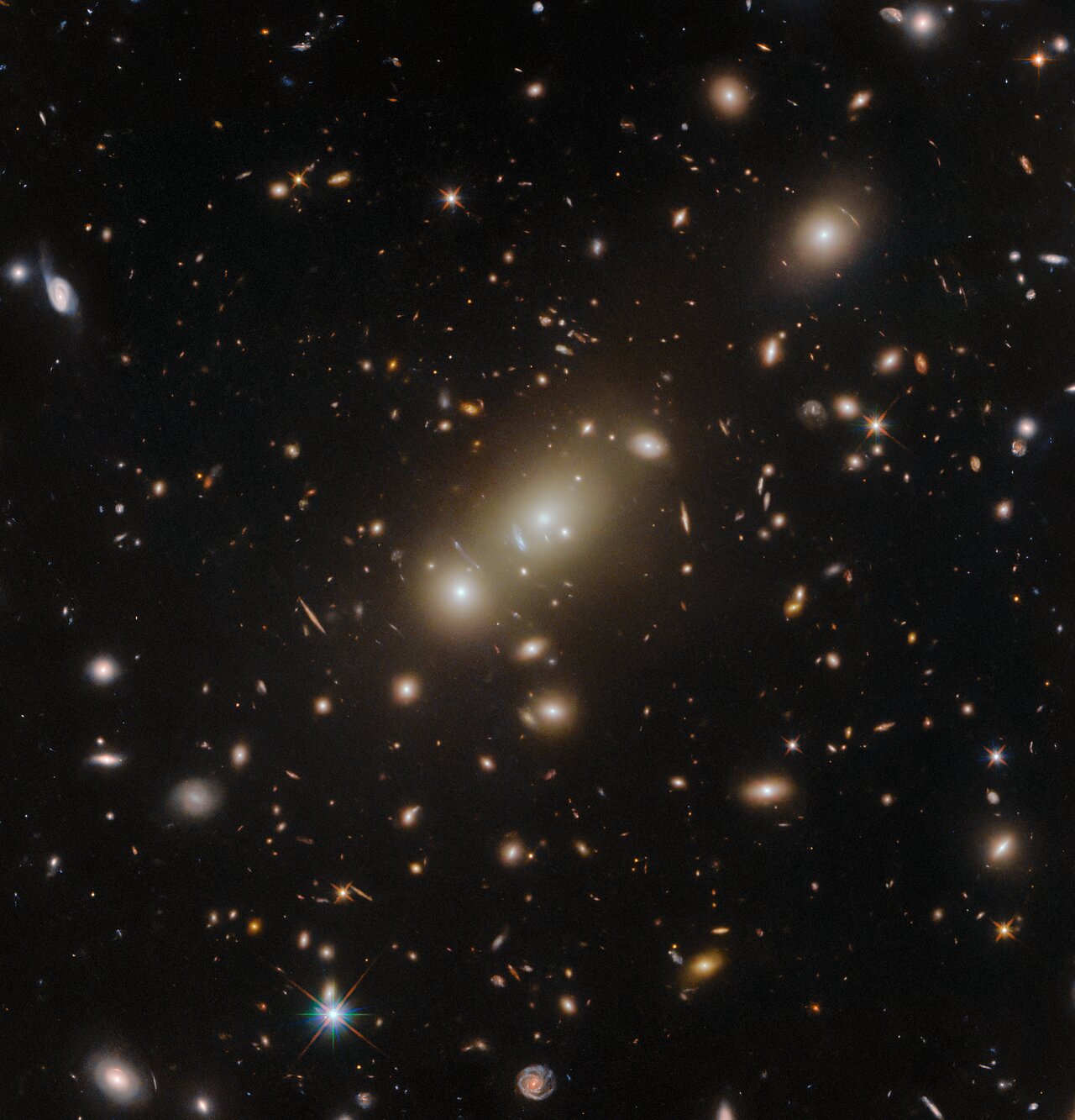Cosmos 2MASX J05101744-4519179
The truly massive galaxy cluster 2MASX J05101744-4519179 basks in the centre of this image from the NASA/ESA Hubble Space Telescope. This distant galaxy cluster is a cosmic leviathan that is highly luminous at X-ray wavelengths. Observing galaxy clusters like 2MASX J05101744-4519179 can advance our understanding of the evolution and interactions of dark and luminous matter in galaxy clusters, and also reveals powerful gravitational ‘telescopes’ that magnify distant objects through gravitational lensing. Knowing the location of these lenses can enable future observations with both Hubble and the NASA/ESA/CSA James Webb Space Telescope. The cluster 2MASX J05101744-4519179 is located in the constellation Pictor, around 2.6 billion light-years from Earth.
Two of Hubble’s instruments joined forces to create this image: Wide Field Camera 3 and the Advanced Camera for Surveys. Both are third-generation instruments that offer superb image quality and high sensitivity to astronomers studying a range of scientific questions. Both instruments provide images of wide areas of the night sky, but view slightly different parts of the electromagnetic spectrum. WFC3 spans the spectrum from the ultraviolet through to visible light and the near-infrared. In contrast to the wide panchromatic coverage of WFC3, ACS was optimised for visible-light observations.
Getting the best from Hubble requires instruments to use built-in corrective optics to account for the effects of the primary mirror’s aberration. During the construction of Hubble, a faulty instrument caused the primary mirror to be very precisely ground to slightly the wrong shape by only 0.0002 mm. A corrective instrument called COSTAR was developed to account for this tiny discrepancy, and later instruments like WFC3 and ACS were built with their own corrective optics.
[Image Description: A cluster of elliptical galaxies, visible as a crowd of oval shapes, each glowing around a bright core. The elliptical galaxy that appears largest by far is in the centre, with the other largest galaxies close to it. They are surrounded by a variety of more distant stars and galaxies, in many shapes and sizes but all much smaller, on a dark background.]
